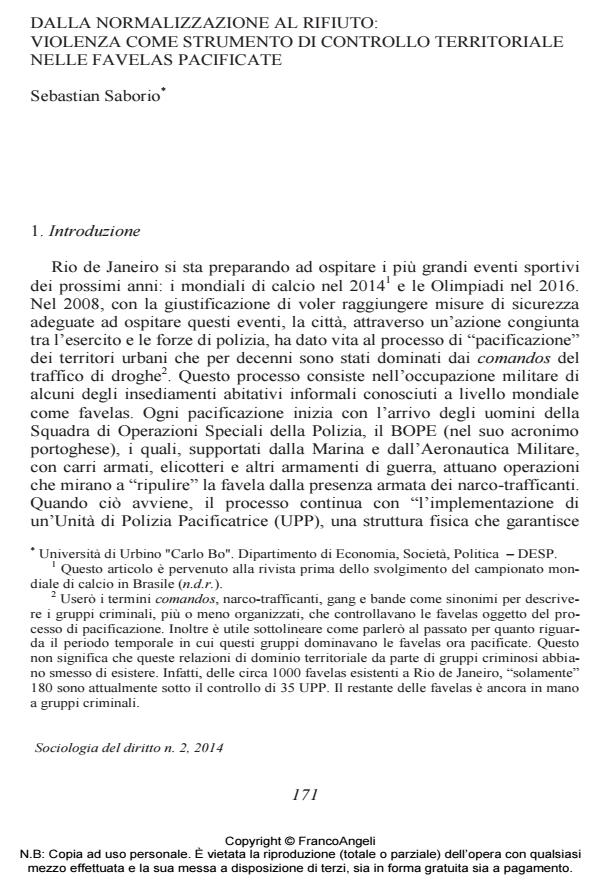From normalising to refusing: Violence as a means of territorial control in pacified favelas
Journal title SOCIOLOGIA DEL DIRITTO
Author/s Sebastian Saborio
Publishing Year 2015 Issue 2014/2
Language Italian Pages 26 P. 171-196 File size 145 KB
DOI 10.3280/SD2014-002007
DOI is like a bar code for intellectual property: to have more infomation
click here
Below, you can see the article first page
If you want to buy this article in PDF format, you can do it, following the instructions to buy download credits

FrancoAngeli is member of Publishers International Linking Association, Inc (PILA), a not-for-profit association which run the CrossRef service enabling links to and from online scholarly content.
As the hosting city of the world’s leading sporting events - the soccer World Cup in 2014 and the Olympics in 2016 - Rio de Janeiro launched a process of "pacification" of its favelas in December 2008, justifying the decision with the intention of achieving suitable safety measures for hosting the events. This process consisted of the military occupation of urban areas that had spent decades dominated by the commandos of the drug cartels. But the violent methods used by the drug barons to control the territory were not simply replaced in the favelas by non-violent methods used by the police. This article sets out to answer the awkward question that social researchers have avoided asking themselves directly ever since the process of pacification started: do the people living in the favelas perceive the domination of the gangs as more acceptable than today’s military occupation?
Keywords: Pacification - Favelas - Rio de Janeiro - Legal consciousness - Violence
- Sicurezza in città: pratiche di controllo all'interno dello spazio urbano Laura Burocco, pp.45 (ISBN:9788867053902)
Sebastian Saborio, Dalla normalizzazione al rifiuto: violenza come strumento di controllo territoriale nelle favelas pacificate in "SOCIOLOGIA DEL DIRITTO " 2/2014, pp 171-196, DOI: 10.3280/SD2014-002007